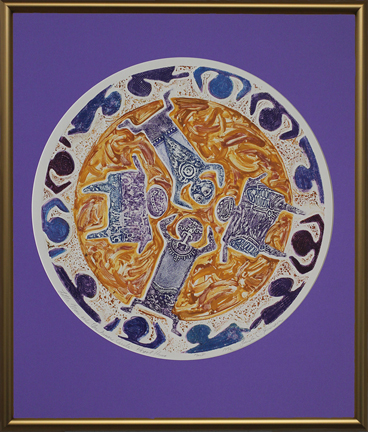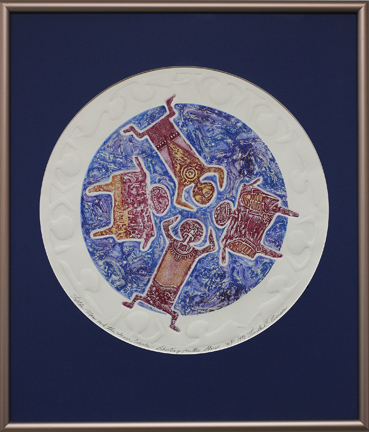MANDALA comes from Sanskrit meaning “CIRCLE“. It is often a spiritual or ritual symbol commonly associated with Hinduism and Buddhism, but in western culture the CIRCLE motif or MANDALA was popularized by Carl Jung. In Jungian psychology the MANDALA can represent the unconscious self and one’s effort to reunify the “Self” and direct one’s [...]]]>

MANDALA comes from Sanskrit meaning “CIRCLE“. It is often a spiritual or ritual symbol commonly associated with Hinduism and Buddhism, but in western culture the CIRCLE motif or MANDALA was popularized by Carl Jung. In Jungian psychology the MANDALA can represent the unconscious self and one’s effort to reunify the “Self” and direct one’s focus in meditation.
The MANDALA shape also often represents the universe or cosmos, with the outer circle sometimes representing wisdom. According to The Berzin Archives, there are FOUR levels of offering: an outer offering, inner offering, secret offering, and offering of the nature of reality. Berzin also says that some mandalas are NOT round, but can be bowls, palaces, etc…

The mandala is significant in many cultures and religions and often a theme in artwork. Currently, three of my mandalas are being shown in the “Spirituality of the Mandala: Reality in the Round” show at Nails in The Wall Gallery St. Lukes in Metuchen, NJ.

My mandala series, “Little Men and the Inner Circle”, is a symbiosis of primitive figures drawn by my children and my photographs of petroglyphs we visited while hiking in the American west. FOUR is a common element in mandalas and my FOUR primitive figures are filled with various petroglyph symbols of man in his environment. There is a sense of self reflection, wonder, timelessness, centering, spiritual energy and the swirling universe in the artwork. The OUTER CIRCLE in my mandalas supports the INNER CIRCLE of humanity.
My art process involved using my children’s FOUR primative images into which I collaged photographic film positives of rocks, petroglyphs, and other textures. These FOUR transparent primative images were exposed onto zinc plates, etched, and then cut into shapes. The figures were used in ALL of my seven mandala monoprints; each printed with different themes, colors and background imagery.
To create the different backgrounds, I used other printmaking techniques such as relief roll, collagraph, painting on plexi, and embossment. All were inked and printed on paper on an etching press.
You can see more primitive monoprints on my website in the Family Album Hieroglyphics series with includes the Little Men and the Inner Circle mandalas.